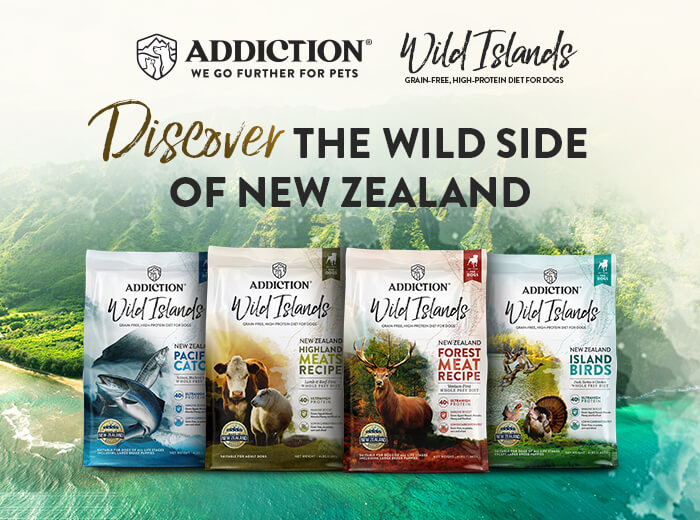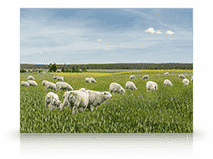Swift and deadly, the horrors of a canine condition called gastric dilatation or ‘bloat’ are little known amongst pet owners considering the potentially tragic consequences. Incidents of bloat have been recounted time and again, of perfectly healthy dogs that are running around in the morning and dying by evening that same day. In extreme cases, it can cause death in as little as an hour. In most cases, pet owners are left devastated and bewildered by what has happened due to lack of public knowledge about bloat. Bloating can degenerate into a deadly serious condition that is almost always fatal if not treated in time – it is often regarded as the second biggest killer illness in dogs after cancer – and all dog owners should be made aware of its symptoms and severity before it is too late.
The concept of bloating as being a life-threatening condition can be baffling for us humans. Bloating, or ”gas”, in humans is a common occurrence that virtually everyone is familiar with, especially after a late-night heavy meal. It is often uncomfortable and sometimes painful, but hardly any further cause for concern as it invariably passes. So what then happens differently in dogs that makes bloat such a terrible syndrome?
What Is Bloat?
Bloat, or ‘Gastric Dilatation-Volvulus (GDV)’, is a condition in dogs where an accumulation of gas is trapped in a dog’s stomach, causing it to swell and put pressure on other surrounding organs and diaphragm (gastric dilatation). As the stomach continues to distend it can lead to a critical stage where volvulus, or gastric torsion occurs, and the stomach rotates or ‘flips’, trapping in any air, food or water and at the same time closing off the esophagus and duodenum (upper intestine), thereby blocking blood supply as well as any release of air pressure. At this point, the dog’s condition deteriorates rapidly as he goes into shock and death is almost certain unless surgical treatment is administered in time. Even then, the mortality rate is significantly higher at this stage.
What Causes Bloat?
Studies have so far not pinpointed a single leading cause of bloat, although numerous inconclusive studies have suggested that a dog’s temperament, pace of eating and number of meals consumed a day are factors in the development of bloat. It is also far too simplistic to link bloat to a single trigger; rather, the risk of bloat occurring is higher when certain events and circumstances are combined with some genetic predisposition.
Some breeds are predisposed to develop bloat more than others, particularly larger, deep-chested breeds like Great Danes, Boxers, Weimaraners, Dobermans, Saint Bernards, Samoyeds, Labrador Retrievers and German Shepherds . These breeds have sufficient space in their chest cavity for torsion to occur and as such the risk is higher, as opposed to a smaller dog like a Chihuahua where its small size prevents this from happening. Diet suitability also appears to be a risk factor for bloat, if a dog has intolerance to certain foods. The irritants in these foods cause swelling in the stomach lining due to their low digestibility and gas build-up. If the undigested food and gas stays in the stomach too long without being passed out, the risk of bloat increases.
The spectrum of bloat severity also varies widely, from a gassy dog that is able to pass out the unwanted gas easily to a dog suffering from gastric torsion where emergency surgery is necessary to save his life. This is not to say that other non-deep chested breeds don’t develop bloat because it is important to remember that the condition can occur in any dog; however the condition is often not as serious in non-deep chested breeds and does not reach the torsion stage as many dogs are able to pass out the unwanted gas.
Symptoms
It is important never to take any suspicion of bloat lightly. Milder symptoms such as a gassy dog or incidences of vomiting tend to go unnoticed and unattended, often because these signs go away quickly or are also symptomatic of so many other illnesses. Some indications that your dog may be suffering from bloat are:
- An unusually distended abdomen that feels tight to the touch (to be differentiated from a slightly swollen belly after eating or drinking)
- Repeated attempts to vomit that are often unsuccessful
- Frequent vomiting or diarrhea
- Your pet just doesn’t act like himself (if combined with repeated attempts to vomit, there is a very real possibility that your dog has a serious case of bloat and you should schedule an emergency appointment with your vet)
- Excessive panting, drooling or coughing
- Foaming at the mouth
- Obvious signs of abdominal pain and discomfort, e.g. restlessness, anxiety, repeatedly getting up and lying down
- ‘Hunched up’ appearance
- Sudden weakness or collapse
Prevention
Awareness of the condition is crucial and goes a long way in saving your pets’ lives. Once pet owners know the risk factors for the breeds they own and what to look out for, bloat detection is certain to be quicker and hence more treatable. Working out a mode of action in the event that bloat occurs is also advisable, and we’ve outlined some key measures you may want to factor in:
- Identify if your pet is an at-risk breed. If so, make sure that you have the contact number of your veterinarian or veterinary hospital on hand in case of emergencies
- Familiarise yourself with the symptoms and triggers of bloat so that you’ll be able to spot any problem early enough.
- Bloat is a serious time-sensitive condition; the longer you wait to seek emergency treatment the lower the chances of survival. Sometimes all dog owners have is a 2-hour window. As such, when you suspect a case of bloat do not take the chance to try out any home remedies. Make an emergency appointment straight away with your veterinarian.
This article is intended for educational purposes only. Always seek veterinary advice immediately if you have questions about your pets’ health.











